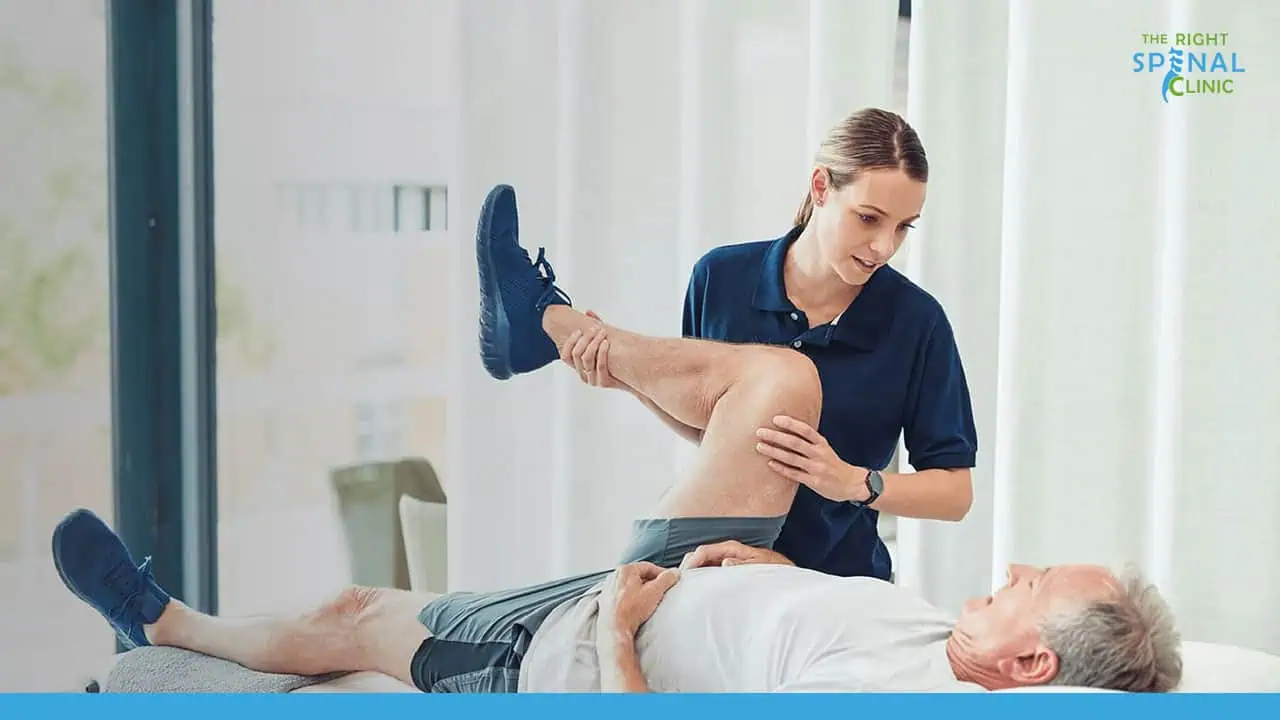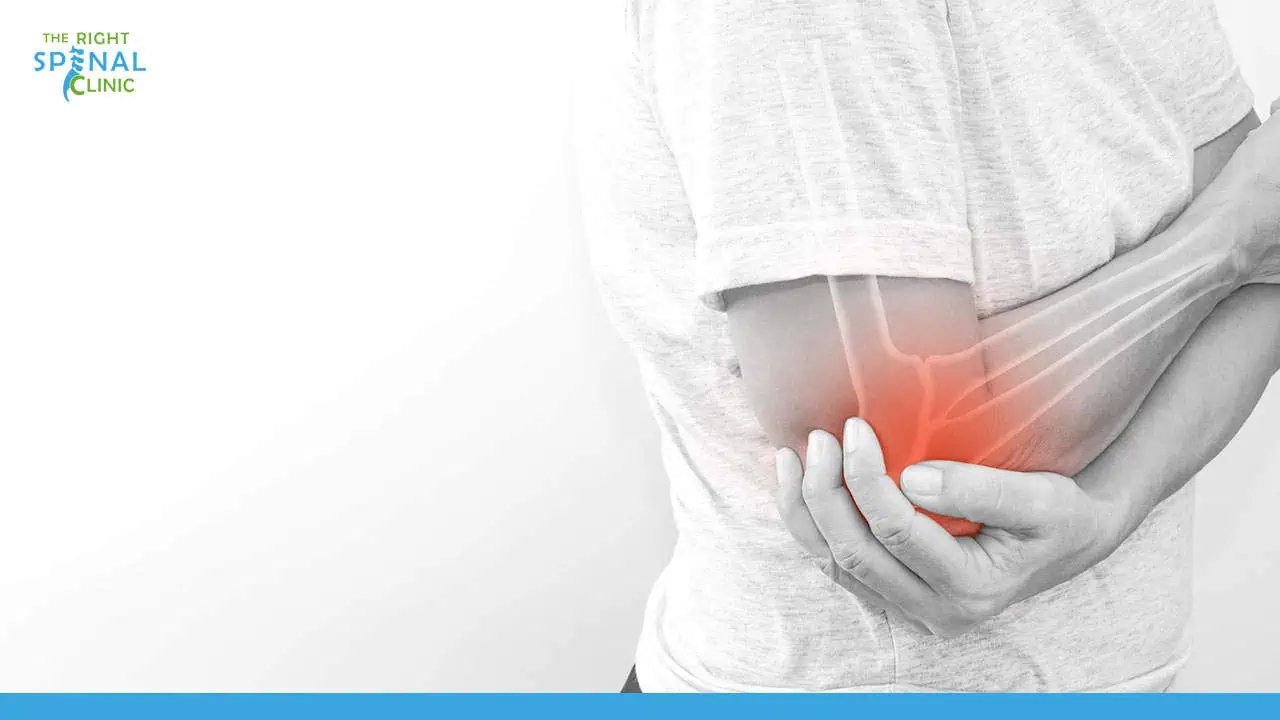
Are you plagued by nagging muscle pain, stiffness, limited range of motion, or back pain? The culprit could be trigger points - those persistent knots or nodules within your muscle fibers and fascia. Trigger points can cause referred pain, tightness, and restricted mobility, disrupting your daily life. Don't let them continue to hold you back. Trigger point therapy offers a targeted solution to alleviate your symptoms and restore proper muscle function.
This specialized massage therapy approach, developed by Drs. Travell and Simons, focuses on identifying and treating hypersensitive trigger points through various techniques like applying direct pressure, dry needling, trigger point injections, and stretching exercises. During a session with a licensed massage therapist in Tampa, Florida, these manual techniques are used to locate, assess, and treat your specific trigger points. The goal is to break the cycle of pain, muscle guarding, and dysfunction by releasing active and latent trigger points, alleviating tension, improving range of motion, and promoting long-term muscle health.
What are Trigger Points?
Trigger points are painful spots or knots that develop within muscle fibers or the fascia surrounding muscles. These small, localized areas of contracted muscle fibers can cause referred pain, tenderness, and limitations in range of motion, making them a significant source of musculoskeletal discomfort and dysfunction.
Understanding the Basics of Trigger Points
Trigger points are essentially small, localized areas of contraction can cause pain and discomfort in other areas of the body, known as referred pain. These knots can develop due to various factors, including muscle overuse, repetitive strain, poor posture, trauma, or underlying medical conditions.
Types of Trigger Points and Their Characteristics
There are two main types of trigger points: active and latent.
Active trigger points are those that cause pain and discomfort at rest or with minimal activity. They are often associated with referred pain, muscle weakness, and restricted range of motion.
Latent trigger points, on the other hand, are not immediately painful but may become active due to increased muscle tension, stress, or other factors. They can also contribute to muscle tissue stiffness and reduced flexibility.
How Trigger Points Cause Pain and Dysfunction
Trigger points can cause pain and dysfunction through several mechanisms. First, the contracted muscle fibers within the trigger point can compress nearby blood vessels and nerves, leading to ischemia (restricted blood flow) and nerve irritation, which can result in referred pain.
Additionally, trigger points can disrupt normal muscle function and coordination, leading to muscle weakness, reduced range of motion, and altered movement patterns. This can contribute to compensatory movement strategies and further strain on other muscles, perpetuating the cycle of trigger point formation and associated dysfunction.
How Trigger Point Therapy Works
Trigger point therapy aims to alleviate intense pain and restore muscle function by directly addressing trigger points - contracted knots within muscle fibers. The process involves:
- Identifying trigger points through palpation and assessment.
- Applying sustained pressure on the trigger point using fingers, tools, or massage as a way to release trigger points.
- Incorporating stretching and lengthening exercises to restore normal muscle length.
- Retraining muscles through specific exercises to promote proper activation patterns.
- Providing self-care recommendations to prevent recurrence.
The therapy may cause initial discomfort but can lead to significant relief and improved mobility by releasing trigger points and addressing muscle imbalances.
Principles of Trigger Point Therapy
Trigger point therapy is a therapeutic approach that aims to relieve pain and restore normal muscle function by directly addressing the underlying trigger points. The primary principles of this therapy include:
- Direct Compression: Applying sustained, focused pressure to the trigger point using fingers, knuckles, or specialized tools to help release the contracted muscle fibers and improve blood flow to the area.
- Stretching and Lengthening: Incorporating stretching and lengthening techniques to help relax the affected muscle fibers and restore their normal resting length, improving range of motion and reducing tension.
- Muscle Re-education: Incorporating specific exercises and movements to retrain the affected muscles to function properly, promoting proper muscle activation patterns and reducing the likelihood of trigger point recurrence.
Benefits of Trigger Point Massage Therapy
Trigger point massage therapy can offer numerous benefits, including:
- Pain Relief: By addressing the underlying trigger points, this therapy can provide significant relief from referred pain, muscle aches, and discomfort.
- Improved Range of Motion: Releasing trigger points can help restore normal muscle length and flexibility, leading to an increased range of motion and improved mobility.
- Reduced Muscle Tension: Trigger point therapy can help relax tense and contracted muscles, promoting overall muscular relaxation and reducing the risk of future trigger point formation.
- Enhanced Muscle Function: By addressing muscle imbalances and promoting proper muscle activation patterns, trigger point therapy can improve overall muscle function and coordination.
Trigger Point Therapy Session: What to Expect
A typical trigger point therapy session may involve the following steps:
- Assessment: The massage therapist will examine the affected areas, identify trigger points, and assess the client's overall muscle condition and posture.
- Warm-up: Light stretching or other warm-up techniques may be used to prepare the muscles for treatment.
- Trigger Point Release: The therapist will apply direct pressure or massage techniques to the identified trigger points, using fingers, knuckles, or specialized tools. This may cause some discomfort initially, but should ultimately lead to a release of tension and relief.
- Stretching and Lengthening: After releasing the trigger points, the therapist may guide the client through stretching and lengthening exercises to help restore normal muscle length and flexibility.
- Muscle Re-education: Depending on the client's needs, the therapist may provide specific exercises or movement patterns to help retrain the affected muscles and promote proper muscle activation patterns.
- Aftercare: The therapist may provide recommendations for self-care, such as applying ice or heat, performing specific stretches, or modifying activities to prevent trigger point recurrence.
It's important to note that trigger point therapy may require multiple sessions for optimal results, and the duration and frequency of sessions will depend on the individual's condition and response to treatment.
Common Techniques in Trigger Point Therapy
Trigger point therapy encompasses a range of techniques designed to alleviate pain and restore muscle function by targeting specific areas of muscle tension and contracture known as trigger points.
Trigger point therapy is a versatile approach that employs various techniques to address the underlying causes of musculoskeletal pain and dysfunction. Some of the most common techniques used in this therapy include:
Applying Pressure on Trigger Points
One of the primary techniques in trigger point therapy involves applying sustained pressure directly to the trigger points. This can be done using the therapist's fingers, knuckles, or specialized tools like foam rollers or trigger point release tools. The pressure is applied in a controlled manner, gradually increasing in intensity until the muscle releases or the client's discomfort reaches a manageable level.
Trigger Point Injections: When Are They Necessary?
In some cases, particularly when trigger points are severely knotted or deeply embedded, trigger point injections may be recommended. This technique involves injecting a solution, typically containing an anesthetic and a corticosteroid, directly into the trigger point. Trigger point injections can help to break up the knot and reduce inflammation, providing relief from persistent pain and facilitating the release of the trigger point.
Dry Needling vs. Massage Therapy for Trigger Points
Dry needling is another technique that can be used in conjunction with trigger point therapy. It involves inserting thin, solid filament needles into the trigger points to elicit a twitch response, which can help to release the muscle tension and reduce pain and tenderness. Dry needling is often compared to massage therapy, as both techniques aim to release trigger points and restore muscle function. However, dry needling is considered more invasive and may be more effective for treating deeper or stubborn trigger points.

Trigger Points and Myofascial Pain Syndrome
Trigger points and myofascial pain syndrome are closely interrelated concepts in musculoskeletal health. Myofascial pain syndrome is a chronic pain disorder characterized by the presence of trigger points in the muscles and surrounding connective tissues (fascia), leading to localized and referred pain patterns.
Connection Between Trigger Points and Myofascial Pain
Trigger points are considered the primary underlying cause of myofascial pain syndrome. These hyperirritable spots within taut bands of muscle fibers can become activated, leading to localized muscle spasms, restricted range of motion, and referred pain patterns. The presence of multiple active trigger points in various muscle groups can contribute to the development and perpetuation of myofascial pain syndrome.
Using Trigger Point Therapy for Myofascial Pain Relief
Trigger point therapy is a highly effective approach for managing myofascial pain syndrome. By directly addressing and deactivating the underlying trigger points, this therapy can alleviate the associated pain, muscle tension, and dysfunction. Techniques such as manual pressure, massage, dry needling, and trigger point injections can help release the contracted muscle fibers, restore proper muscle function, and break the cycle of pain and muscle guarding.
Managing Trigger Points and Muscle Pain
Effective management of trigger points and muscle pain requires a comprehensive approach that combines various techniques and lifestyle modifications. By addressing the underlying causes and promoting overall muscle health, individuals can alleviate discomfort, improve mobility, and prevent the recurrence of trigger points.
Posture Correction to Prevent Trigger Points
Poor posture and repetitive strain can contribute to the development of trigger points. By practicing proper posture and body mechanics, individuals can reduce the stress placed on muscles and prevent the formation of new trigger points. Ergonomic adjustments, such as adjusting workstations or changing sitting positions, can also help alleviate muscle tension and prevent trigger point formation.
Range of Motion Exercises for Trigger Point Relief
Regular stretching and range of motion exercises can play a crucial role in managing trigger points and muscle pain. These exercises help to lengthen and relax the affected muscles, reducing tension and promoting better circulation. Additionally, they can prevent the formation of new trigger points by maintaining muscle flexibility and preventing adhesions or knots from developing.
How to Identify and Treat Different Types of Trigger Points
Trigger points can be categorized into two main types: active and latent. Active trigger points are those that cause pain and discomfort at rest or with minimal activity, while latent trigger points are not immediately painful but can become active due to increased muscle tension or other factors.
Identifying the type of trigger point and its location is essential for effective treatment. Active trigger points may require more aggressive treatment approaches, such as trigger point injections or dry needling, to release the contracted muscle fibers and alleviate pain. Latent trigger points, on the other hand, may respond well to manual pressure, massage, or stretching techniques.
The Right Spinal Clinic Can Help
If you're struggling with myofascial trigger point, muscle pain, or myofascial pain syndrome, seeking professional help from The Right Spinal Clinic can make a significant difference in your recovery journey. Experienced practitioners at The Right Spinal Clinic are equipped with the knowledge and techniques necessary to identify and effectively treat trigger points and their underlying causes.
At The Right Spinal Clinic, you can expect a comprehensive approach that combines trigger point treatment with other complementary treatments. Complementary treatment may massage, stretching, exercise programs, and lifestyle modifications. This multi-faceted approach not only addresses the immediate pain and discomfort but also aims to prevent the recurrence of trigger points and promote long-term muscle health.
Don't let trigger point pain hold you back any longer. Take the first step towards relief by contacting The Right Spinal Clinic today. Our team of experts is ready to help in the diagnosis and management of your condition and restore your quality of life. Call us at (813) 392 2164 to schedule an appointment and begin your journey towards a pain-free, mobile life.
Things to Do in Tampa
Tampa, the sparkling city on Florida's Gulf Coast, offers an abundance of exciting activities and attractions for visitors of all ages. From thrilling theme parks and natural wonders to cultural gems and outdoor adventures, this vibrant destination has something to delight everyone. Whether you're a thrill-seeker, beach enthusiast, art lover, or outdoor adventurer, Tampa's diverse offerings are sure to create lasting memories. Explore the following list of must-do experiences to make the most of your visit to this captivating city.
- Visit Busch Gardens Tampa Bay (theme park with roller coasters and animal exhibits)
- Explore the Florida Aquarium (see sharks, stingrays, and other marine life)
- Take a relaxing stroll along the Tampa Riverwalk
- Check out the lively Ybor City neighborhood (restaurants, nightlife, and entertainment)
- Visit the Tampa Museum of Art and see their impressive collection
- Catch a baseball game and watch the Tampa Bay Rays play
- Go on a dolphin watching cruise
- Relax on the white sandy beaches of St. Pete Beach
- Explore the outdoor trails and exhibits at ZooTampa at Lowry Park
- Shop and dine at the open-air Hyde Park Village
- Take a day trip to Fort De Soto Park (beaches, trails, and historic fort)
- Attend a festival or event like the Gasparilla Pirate Fest
- Go kayaking or stand-up paddleboarding on the waters around Tampa Bay
- Visit the lush Florida Botanical Gardens
- Sample craft beers at one of Tampa's many local breweries
With its perfect blend of urban excitement and natural beauty, Tampa truly has it all. From soaking up the sun on pristine beaches to exploring world-class museums and attractions, this vibrant city promises an unforgettable experience. Don't miss out on the chance to create cherished memories by participating in the many activities and adventures that Tampa has to offer. Start planning your Tampa getaway today and get ready to embark on an extraordinary journey filled with fun, relaxation, and lifelong memories.
Recent Posts











